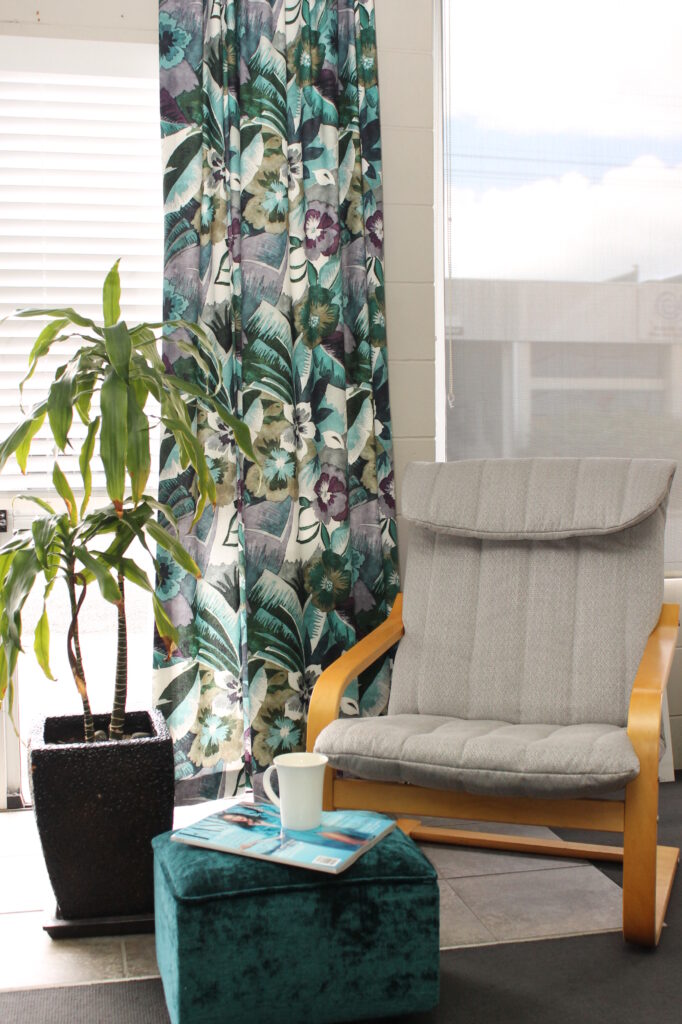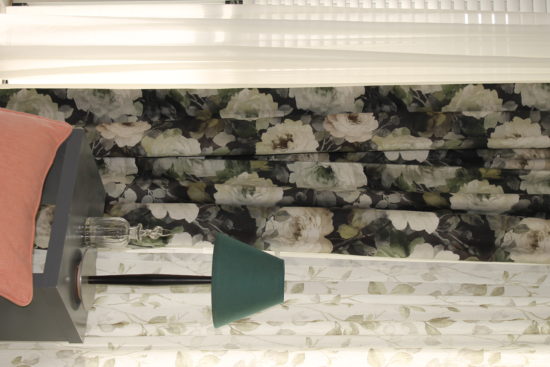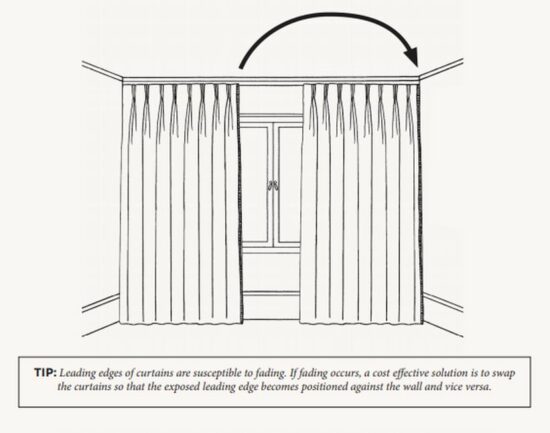No matter how hard we try, fading on our curtains, blinds and drapes is inevitable but leading fabric house James Dunlop has advice that can help you minimise the damage.

How this damage occurs is complex. Ultraviolet light spurs a reaction between the water present in fabric and atmospheric oxygen to create hydrogen peroxide. This is a bleaching agent and breaks down the chemical bonds that give dyes their colour. It’s not actually the fabric fading, it’s the dye itself.
Additionally, as the chemical bonds break down within the yarn, the fabric can become brittle and weak making it more susceptible to breakage.
The effects of UV damage aren’t immediate, it’s a gradual process increasing in impact over time, leaving your curtains, cushions and upholstery fabric looking faded and worn.
You can have UV damage from direct and indirect light – with light bouncing off surfaces within your home.
The best fibre type in high sun environments is definitely solution dyed acrylic, olefin or polyolefin followed very closely by polyester.
Of natural fibres, cotton and linen have quite good sun resistance with quality dye stuff, much more than for example, Silk.

Tips;
- Install a good quality lining behind your curtains, which has a high UV rating. Not only does this provide insulation from heat and cold and block out all light for restful sleep but it will help to protect your curtains from sun damage over time.
- Ensure there is plenty of room to stack back your curtains which limits direct contact of sunlight on to the front edges of your curtains and will extend their life.
- Swap curtains occasionally from one side of the track to the other, to avoid having one edge constantly exposed to sunlight, reducing the visibility of any colour change.
- Invest in sheers (or sun screen roller blinds) that will filter the sunlight entering your home, offering privacy, as well as reducing the sun’s impact
- Apply a UV window tint. These will drastically reduce the amount of UV light entering your space, saving not just your fabrics but your flooring, walls and hard furniture as well.
By taking some of these simple steps, you could extend the life of your soft furnishings and keep them beautiful for years to come.


